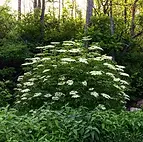Our Mothers Heartbeat
Who would
have thought?
PLANTS

The actual amount of thought about something like a plant may seem mundane to some but it is the reason we are here. Maybe a reconnection to them may start the actual repair of the damage done?

Willow
The willow is a valuable and important species for not only the local indigenous tribes but also those across North America. Its uses are many and well documented.
The regaining of a concern about the land is the first event that must occur and then apply the same standards that we have achieved as terminated Indians and reconnect to the plants the land provides, We must reconnect in more than a convenient fashion. We must reconnect with reverence. It starts by appreciating utility.
Red Cedar
Western red cedar was important for many Native American tribes within its range. They used its straight-grained, aromatic, rot-resistant wood for building objects from ceremonial head dresses and rattles to wooden storage boxes, dishes, coffins, houses, and canoes. They used the inner and outer bark to make clothing, baskets, and mats. The tree’s aromatic foliage was used as a drug for various ailments, including rheumatism, colds, and venereal sores, and men chewed its branch tips to avoid nausea while burying corpses.

Pacific Yew
Traditionally, the resilient and rot-resistant wood was used by Native Americans to make tools, bows (backed with sinew), arrows, and canoe paddles. Other purposes for yew included making harpoons, fishhooks, wedges, clubs, spoons, drums, snowshoes, and arrowheads. The foliage and bark was used for medicinal purposes. Members of the Pit River Tribe would sell this plant to the Ukiah.
We will gather together, huckleberries


Early, tomorrow morning
This tree is taller


than this
tree
This tree is taller


than this
tree


















